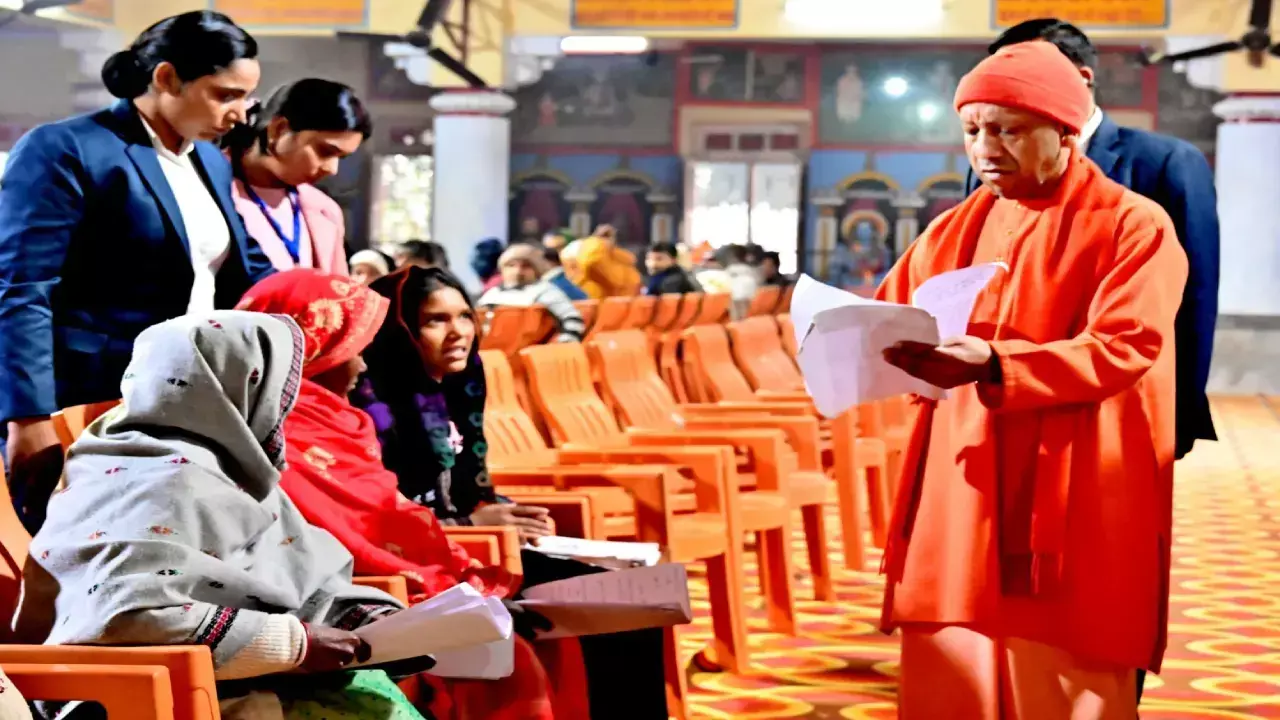Challenges to India from China

The scholar of India-China relations on the contours of the ‘new Cold War’ in Asia and Beijing’s vision for the Indian Ocean speaks about the challenge to India from China in South Asia, his research on the 1962 war, and why he thinks there will not be another India-China war, even as India firms its counter-alliance in the Indo-Pacific.
The scholar of India-China relations on the contours of the ‘new Cold War’ in Asia and Beijing’s vision for the Indian Ocean speaks about the challenge to India from China in South Asia, his research on the 1962 war, and why he thinks there will not be another India-China war, even as India firms its counter-alliance in the Indo-Pacific.
The recent standoff between India and China at the Doklam plateau which lies at a tri-junction between the India, China, and Bhutan has gained much attention. It has turned into the biggest military stand-off between the two armies in years. There are many who even fear a war.
U.S. and Russia stand
1. Trade between India and China is important for both the nations and its growing continuously. Any impact to the trade would dversely affect both the nations. So there is unlikely to have a war between India and China today.
2. What we’re seeing today is a new Cold War in Asia, an informal alliance between India and Japan [versus China]. The United States is a bit unpredictable under Donald Trump, but it had under previous president embarked on a pivot to Asia, with the rise of China as the main concern.
3. For the first time, since the 15th century and Admiral Zheng He, the Chinese are now in the Indian Ocean. China didn’t even have a proper navy until recently. So now when it talks of One Belt One Road, and the ancient maritime trade routes, it must be remembered it’s not so ancient.
4. In the Indian Ocean, we have India, which considers it its own lake, as it were. But also in the Indian Ocean is the U.S.’s most important base, Diego Garcia. And the French control 2.5 million acres of land in the Indian Ocean. This is why these alliances are growing.
Border disputes between India and China The India-China borders can be broken down into three sectors
1. Western Sector – DISPUTED – This comprises the Aksai Chin sector. This region which originally was a part of the state of Jammu and Kashmir is claimed by China as part of its autonomous Xinjiang region. After the 1962 war, it is administered by China. It is the second largest Indo-China border area covering over 38000 sq. km. However, it is an uninhabited land. While India claims the entire Aksai Chin territory as well as the Shaksgam valley (Indian territory gifted to China by Pakistan), China contests Indian control over Daulat Beg Oldi (a tehsil in Leh, south of Aksai China-it is believed to host the world’s highest airstrip)
2. Central Sector – UNDISPUTED – Although China has recognised India’s sovereignty over Sikkim and had initiated the trade at Nathu La pass, the Doklam fiasco could mean trouble at all ends.
3. Eastern Sector – DISPUTED – The Arunachal Pradesh border that China still claims to be its own territory is the largest disputed area, covering around 90000 sq. km. It was formally called North East Frontier Agency. During the 1962 war, the People’s Liberation Army occupied it but they announced a unilateral ceasefire and withdrew respecting the international boundary (Mcmahon Line). However, it has continued to assert its claim over the territory. Nowadays, almost the whole of Arunachal is claimed by China.
Doklam stand-off drive a wedge between India and Bhutan
1. Bhutan is China’s only neighbour that doesn’t have diplomatic ties with it. Relations are maintained through these boundary talks, which have been going on for more than two decades.
2. Bhutan has been under Indian influence, but it is now asserting itself as a sovereign power.
3. In recent UNGA resolution on Jerusalem issue India voted in favour of it but Bhutan abstained from voting.
4. Why did China even need the road in Doklam? Maybe the plan was to get Indian troops out of Haa (Bhutan’s Haa Valley) and get them more directly involved in this conflict, which would embarrass many Bhutanese.
5. The statements from Bhutan at the time, which were very cautious, and many Bhutanese think that India overreacted and wanted to show its control over Bhutan.
6. China is on a charm offensive there (in Bhutan). They’re sending acrobats there, circus performers, football teams, tourists, scholarships for students.
7. Clearly China wants to extend its influence to all its neighbours, and that includes Bhutan.
India-China future relations
1. The Indian Ocean is going to become the biggest challenge in the near future. It will be hard to believe both nations will fight another war in the Himalayas.
2. China has in the past suggested a swap between Arunachal/South Tibet and Aksai Chin. On paper that sounds reasonable, but we don’t know how serious the Chinese are.
3. Also, if China were to accept the Line of Actual Control (LAC) as the border, it could control any dissidence within.
4. In India, which is a democracy, the government couldn’t just go ahead with that solution. Because it would be a political suicide.
5. But in the larger picture, China seems not to care if the boundary remains unresolved. They are not looking for a solution; they are looking for a strategic advantage.
6. Where there is a conflict of interest building up is in the Indian Ocean. The joint naval exercises with Australia, US, Japan and other countries are important.
Why is India supporting Bhutan in the Doklam issue?
1. Bhutan and India have a very cordial relationship were as Bhutan and China do not have formal relations.
2. Bhutan has a very strategic position considering India’s geography.
3. To foster the relationship, India and Bhutan signed a ‘Friendship Treaty’ in 2007 that commits India to protect Bhutan’s interests and the close coordination between the two militaries.
4. Also, India is worried that if the road is completed, it will give China greater access to India’s strategically vulnerable “chicken’s neck” (Siliguri Corridor) that links the seven north eastern states to the Indian mainland.
Is Indian border ready to face challenges?
1. India clearly is far ahead of what it was in 1962, both militarily as well as infra-structurally. However, to undermine China would be to relive the fallacies that led to the 1962 war.
2. The ‘Theory of asymmetry’ does not hold ground when dealing with China. Therefore, a rational policy of dialogue is essential. Along with that, seeking gains on the works which have already done must be the target.
Negatives
1. Contrasting the border readiness of the two, for instance, we see stark distinctions, more often, revealing a Chinese upper-hand.
2. As of now, only 21 of the proposed 73 roads have been developed by India for the Indo-China border (Also the revised target is now 2020 instead of the original target, 2012).
3. China, on the other hand, developed and still developing their borders in the pretext of CPEC, OBOR or even otherwise (as in the case of Doklam). This exposes how we are lagging behind in connectivity of our border posts.
4. The ‘Mountain Strike Corps’ of India, specifically proposed to be raised to check the Chinese influence, has a strength which is much less than the proposed strength. Along with that, the force is not yet equipped with advanced armouries that were envisioned for them.
Positives
1. The recent initiatives including Dhola-Sadiya Bridge (Bhupen Hazarika Setu-9.2 km-Connects Assam with Arunachal Pradesh) are a welcome step as they help bring down the travel time and as such, a military response time as well.
2. A Brahmos cruise missile regiment is being deployed in Arunachal Pradesh. This clearly signals Indian intentions to China that finds every opportunity to reiterate its sanction over the territory.
3. Many abandoned airstrips in India are also being reactivated. Though thought-provoking, it is a step towards the right direction.
Other issues between India and China
1. The recent standoff is seen as a culmination of a number of disagreements between India and China and the relations between the two sides has soured in the last 2-3 years. Few of them are:
India’s entry into the UNSC and the NSG
1. China has been opposing India’s entry into the United Nations Security Council (UNSC) and in the Nuclear Supplier’s Group (NSG).
India’s opposition to the OBOR
1. India has been opposing China’s flagship ‘One Belt One Road’ (OBOR) initiative‘, as the ‘China Pakistan Economic Corridor (CPEC)‘, a part of OBOR, passes through the Pakistan Occupied Kashmir (POK) and acceding to OBOR would mean undermining India’s sovereignty.
Strengthening of India-USA relations
1. China is critical of India-USA relations and it is not merely a coincidence that the escalation at the tri-junction coincided with the Indian Prime Minister’s visit to the United States. India supports the US and other countries in reaffirming the freedom of navigation in international waters, which includes the South China Sea. Along with this, the ‘MALABAR Naval exercise’ between India, Japan and USA is also a matter to worry for China.
Issue of Tibet and Dalai Lama
1. The fact that Tibet’s spiritual leader Dalai Lama lives in India is a tension area in India-China relations. The recent visit of Dalai Lama to Arunachal Pradesh has been a matter of conflict between the two sides.
Issue of Masood Azhar
1. India’s bid to get Jaish-e-Mohammad chief Masood Azhar be declared as a UN- designated terrorist has been blocked by China again and again. In fact, China is the only country in the 15 members UNSC to have opposed to the ban. China is of the view that India is trying to pursue political gains in the name of counter-terrorism.
China-Pakistan Economic Corridor (CPEC)
1. The success of CPEC depends on the stability of the country Pakistan and China will have to deal more and more with its internal dynamics.
2. In addition to it, the CPEC connects to Xinjiang, away from China’s economic centres, unlike, say, Myanmar that connects to China’s eastern economic zones and ports.
3. Over the past year, given the problems in Rakhine state, China is even looking for a third route into the Indian Ocean to bypass the choke-point at the Strait of Malacca. Here China is pushing the idea of the Kra Canal (from Gulf of Thailand to the Andaman Sea).
4. So for China what is important is the goal, not so much the routes to it.
China’s control in Myanmar
1. India has three main problems on its boundary with Myanmar compared to China.
2. Infrastructure: On Myanmar’s northern border, China has super-highways, an airport not far from the border. Kunming has been upgraded to a huge international airport. On the Indian side, infrastructure is still a major problem. It’s better than 10 years ago perhaps, but not comparable to what already exists on the Chinese side.
3. Red-tape and bureaucracy: There are still many trade restrictions on the Indian side and several checkpoints. An integrated checkpoint, which is being planned by India, will help.
4. Underground rebel groups operating on the Indian side, which can carry out attacks and extort money all along the border.
5. India has to resolve these problems as People of Myanmar would like to do much more trade with India, because the dependence on China is so massive, it is worrying for everyone, including their military.















